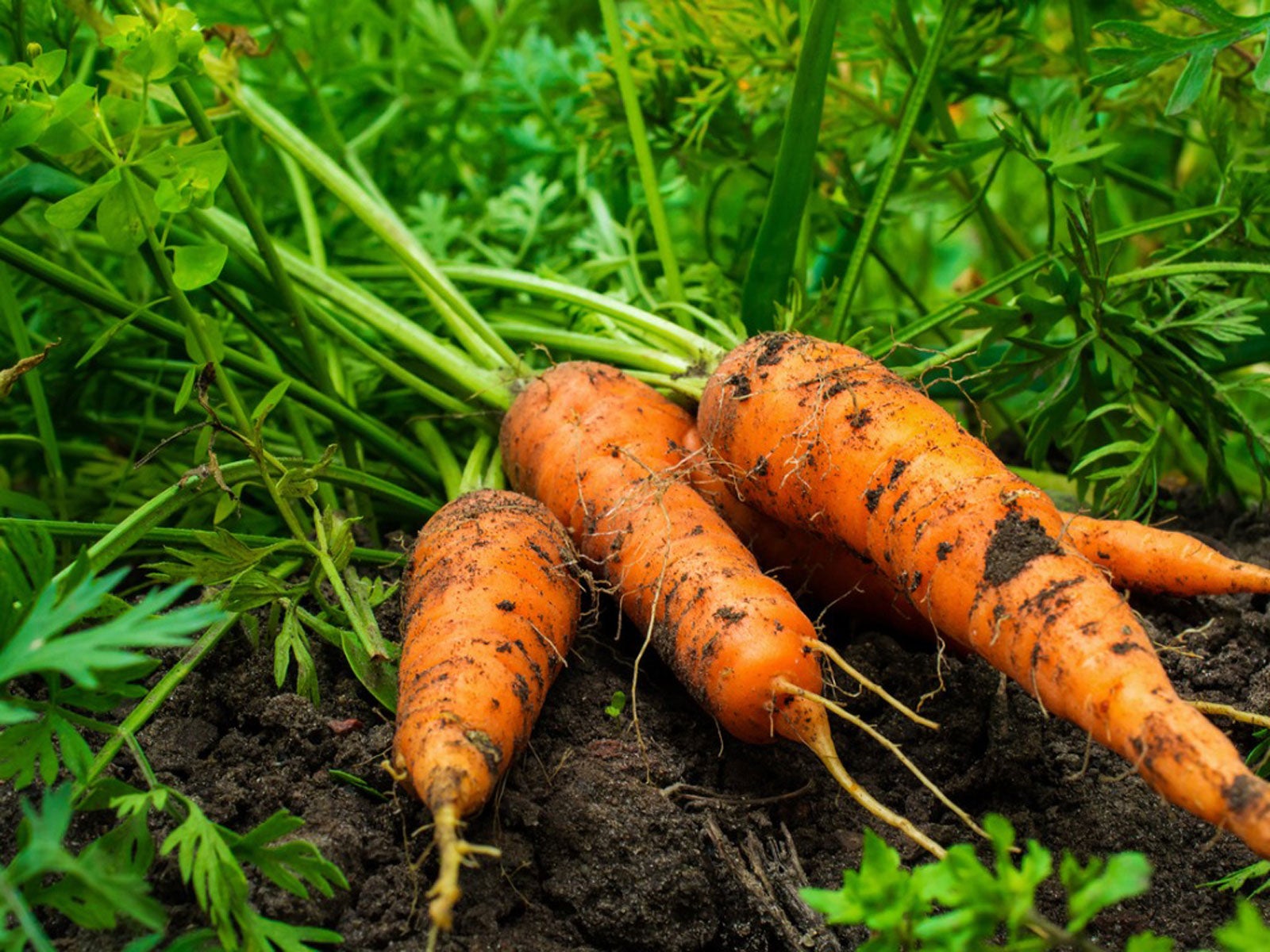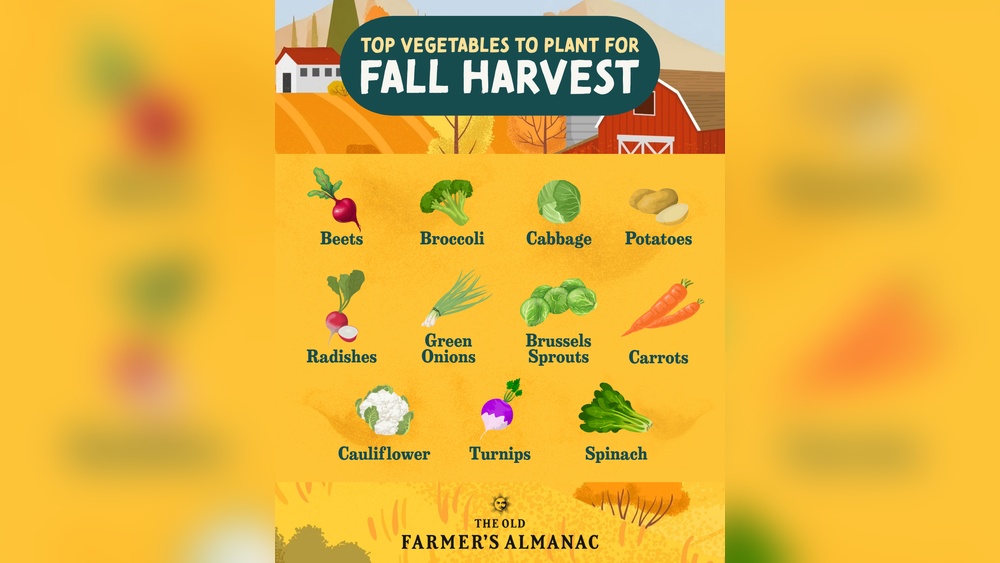As an Amazon Associate, I earn from qualifying purchases.
Are you wondering when the perfect time is to harvest your fall vegetables? Knowing exactly when to pick your crops can make all the difference between a bland meal and a garden full of fresh, flavorful produce.
If you’ve put time and effort into your fall garden, you want to enjoy the best taste and nutrition possible. You’ll discover simple signs to look for and practical tips to help you harvest at just the right moment. Keep reading to make sure your fall harvest is a delicious success!

Signs Of Vegetable Maturity
Knowing the signs of vegetable maturity helps pick fall vegetables at the right time. Harvesting too early or too late affects taste and texture. Each vegetable shows clear signals when it is ready to eat. Watch closely for these signs to enjoy fresh, flavorful produce from your garden.
Visual Cues For Ripeness
Check the size of the vegetable against seed packet guidelines. Many fall veggies grow to a specific size before they ripen. Look for smooth, fully formed shapes without cracks or shriveling. Leaves around the vegetable should be green and healthy, not yellow or dry. Some vegetables, like pumpkins, develop a hard rind when mature.
Texture And Firmness Indicators
Feel the vegetable gently to test firmness. Mature vegetables often feel firm but not hard. Soft spots may mean overripeness or decay. For root vegetables, the skin should be tough yet easy to pierce with a fingernail. Leafy greens should be crisp, not limp or wilted. Firmness helps decide the best time to harvest for peak freshness.
Color Changes To Watch
Color shifts are a strong sign of maturity. Many fall vegetables darken as they ripen. For example, pumpkins turn deep orange and squash skin becomes duller. Peppers change from green to red, yellow, or orange. Beans and peas lose their bright green shade and look fuller. Noticing these color changes guides you to harvest at the perfect moment.

Optimal Harvest Times By Vegetable
Harvesting fall vegetables at the right time is key to good taste and nutrition. Each type of vegetable has a perfect harvest window. Knowing these times helps you enjoy fresh and healthy food from your garden.
Root Vegetables
Root vegetables like carrots, beets, and turnips grow best in cool soil. Harvest them when they reach a good size but before the ground freezes. Carrots are ready after about 60 days. Beets and turnips take 50 to 70 days. Check the size by gently pulling one from the soil. Large roots can get tough or woody.
Leafy Greens
Leafy greens such as spinach, kale, and lettuce grow fast in fall. Pick leaves when they are young and tender. Spinach is best harvested 30 to 45 days after planting. Kale leaves can be picked anytime after 40 days. For lettuce, choose outer leaves or cut the whole head. Harvest before frost for the best flavor.
Fruiting Vegetables
Fruiting vegetables include tomatoes, peppers, and squash. These need warmer days but cooler nights to ripen well. Pick tomatoes when they turn full color and feel soft. Peppers are ready once they reach their color and size. Winter squash should have hard skin and sound hollow when tapped. Harvest before the first hard frost.
Weather And Harvest Timing
Harvest timing for fall vegetables depends greatly on weather conditions. Weather affects the growth and quality of your crops. Knowing how temperature, frost, and rain influence harvest time helps you pick vegetables at their best. Careful observation of weather patterns leads to a better harvest.
Impact Of Frost
Frost can damage or sweeten fall vegetables. Some crops like kale and Brussels sprouts taste better after frost. Others, like lettuce and beans, may rot or get mushy. Watch local frost dates closely. Harvest sensitive crops before the first hard frost arrives.
Rain And Soil Conditions
Wet soil can delay harvest and cause root damage. Heavy rain makes soil soft and muddy. Picking vegetables in wet soil can bruise or break roots. Wait for soil to dry slightly. This prevents damage and keeps vegetables fresh longer.
Temperature Considerations
Cooler temperatures slow vegetable growth but improve flavor in some crops. Warm days with cool nights help sugars build up in vegetables. Avoid harvesting in very hot or very cold weather. Pick vegetables in mild temperatures for best taste and texture.

Tools And Techniques For Harvesting
Harvesting fall vegetables needs the right tools and careful techniques. Using proper tools helps pick vegetables without harm. Good methods keep crops fresh and tasty. Careful handling avoids bruises and waste. This section shares key tools and ways for best results.
Best Harvesting Tools
Sharp garden scissors cut stems cleanly. Pruning shears work well for thicker stalks. A small hand trowel helps dig root vegetables. Use baskets or shallow crates to carry harvest. Avoid heavy containers that can crush produce.
Proper Cutting And Picking Methods
Cut vegetables close to the base. Hold the vegetable gently while cutting. Twist leafy greens softly to remove. Pick only ripe vegetables for best flavor. Do not pull forcefully to prevent plant damage.
Handling To Avoid Damage
Place vegetables gently into containers. Avoid stacking too many to stop crushing. Keep produce in shade to stay fresh. Wash vegetables just before cooking or storage. Dry them well to prevent rot and mold.
Post-harvest Care
Post-harvest care is key to keep fall vegetables fresh and tasty. Proper handling after picking helps maintain flavor, texture, and nutrients. Knowing how to clean, store, and prepare your garden bed ensures a smooth transition to the next growing season.
Cleaning And Storing Vegetables
Remove dirt gently using cool water. Avoid soaking vegetables for long periods. Pat them dry with a clean cloth or paper towel. Store root vegetables in a cool, dark place with good air circulation. Leafy greens do best wrapped in a damp cloth inside the fridge. Keep vegetables separate to prevent spoiling from moisture or ethylene gas.
Extending Freshness
Use breathable containers or mesh bags for storage. Avoid plastic bags that trap moisture. Check stored vegetables regularly for signs of decay. Remove any spoiled pieces quickly to stop spread. Keep storage areas clean and dry. Some vegetables last longer when stored at specific temperatures; research each type for best results.
Preparing For Next Planting
Clear garden beds of old plant debris to reduce pests. Add compost or organic matter to enrich soil. Loosen soil with a garden fork to improve drainage. Plan crop rotation to avoid soil nutrient depletion. Cover beds with mulch to protect from cold. Preparing soil well supports healthy, strong plants next season.
Frequently Asked Questions
When Is The Best Time To Harvest Fall Vegetables?
Harvest fall vegetables when they reach mature size and before frost. Check specific vegetable guides for exact timing. Early harvesting ensures peak flavor and texture.
How Do I Know If Fall Vegetables Are Ready To Pick?
Look for firm texture, rich color, and appropriate size. Leafy greens should be tender, while root vegetables need full development.
Can I Harvest Fall Vegetables After The First Frost?
Yes, some fall vegetables like kale and Brussels sprouts improve after light frost. However, heavy frost may damage others, so harvest accordingly.
What Signs Indicate Overripe Fall Vegetables?
Wilted leaves, soft spots, and dull color usually mean overripe produce. Overripe vegetables lose flavor and texture and should be harvested earlier.
Conclusion
Harvesting fall vegetables at the right time gives the best taste. Watch for color, size, and firmness. Pick vegetables before frost to keep them fresh. Check your garden often to catch the perfect moment. Freshly picked veggies make meals healthy and delicious.
Enjoy the rewards of your hard work this season. Happy harvesting and happy eating!

